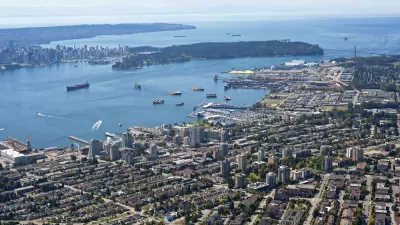Urban planning is falling into obsolescence, according to this piece, but employing old bottom-up techniques that value input from a variety of sources will make it relevant again.
"The lack of sufficient time to plan brings with it an atmosphere of higher risk. If planning is to remain relevant - economically, environmentally, socially, and politically - amidst the instability of the future, it must to be rethought in a manner that assumes risk and does not avoid it. Instead of simplistically putting all its eggs into a future based on past and present trends, urban planning must provide sufficient looseness within future scenarios while attempting to tilt the odds in favor of certain directions.
Cities must be strategized not just in terms of how they are intended to work currently, but also how else they might work under extremely different (unforeseen and inconceivable) circumstances. As such, similar to well-designed software, urban plans must posses a variety of alternative organizational patterns as opposed to not the standard one.
Furthermore, urban planning must balance top-down and bottom-up thinking as a means of creating a variety of plans of equal value. This will necessarily be multi-disciplinary. However, the versatility created - like diversified stock portfolios - will allow a given design strategy to spread the risk and decrease its susceptibility to failure or obsolescence due to change in conditions. Additionally, it will recognize the emergent intelligence of its citizens to give appropriate physical form to the pressures being placed on them - to be refined, not created, by 'higher-level' professionals."
FULL STORY: The future of urban planning is open source

Alabama: Trump Terminates Settlements for Black Communities Harmed By Raw Sewage
Trump deemed the landmark civil rights agreement “illegal DEI and environmental justice policy.”

Planetizen Federal Action Tracker
A weekly monitor of how Trump’s orders and actions are impacting planners and planning in America.

The 120 Year Old Tiny Home Villages That Sheltered San Francisco’s Earthquake Refugees
More than a century ago, San Francisco mobilized to house thousands of residents displaced by the 1906 earthquake. Could their strategy offer a model for the present?

Indy Neighborhood Group Builds Temporary Multi-Use Path
Community members, aided in part by funding from the city, repurposed a vehicle lane to create a protected bike and pedestrian path for the summer season.

Congestion Pricing Drops Holland Tunnel Delays by 65 Percent
New York City’s contentious tolling program has yielded improved traffic and roughly $100 million in revenue for the MTA.

In Both Crashes and Crime, Public Transportation is Far Safer than Driving
Contrary to popular assumptions, public transportation has far lower crash and crime rates than automobile travel. For safer communities, improve and encourage transit travel.
Urban Design for Planners 1: Software Tools
This six-course series explores essential urban design concepts using open source software and equips planners with the tools they need to participate fully in the urban design process.
Planning for Universal Design
Learn the tools for implementing Universal Design in planning regulations.
Clanton & Associates, Inc.
Jessamine County Fiscal Court
Institute for Housing and Urban Development Studies (IHS)
City of Grandview
Harvard GSD Executive Education
Toledo-Lucas County Plan Commissions
Salt Lake City
NYU Wagner Graduate School of Public Service





























